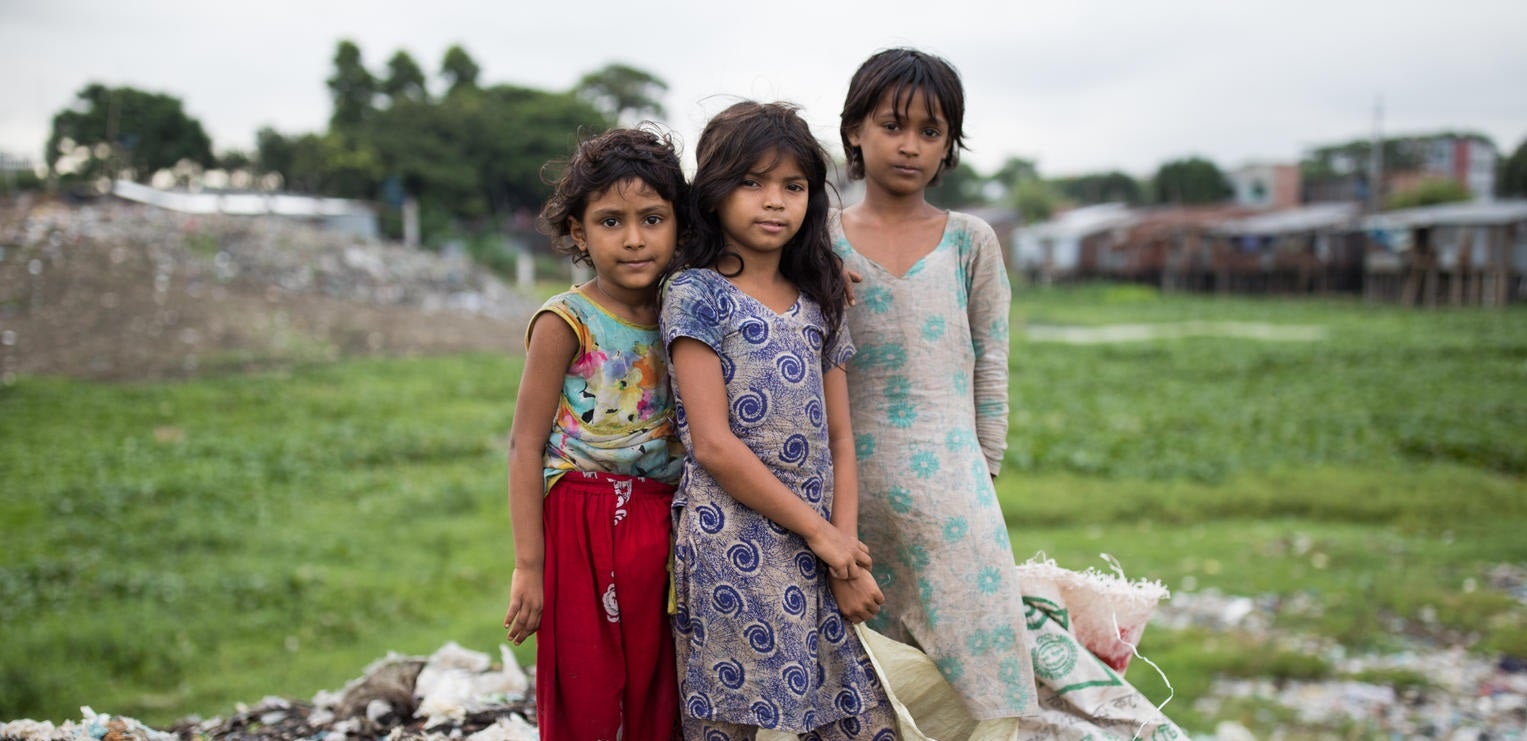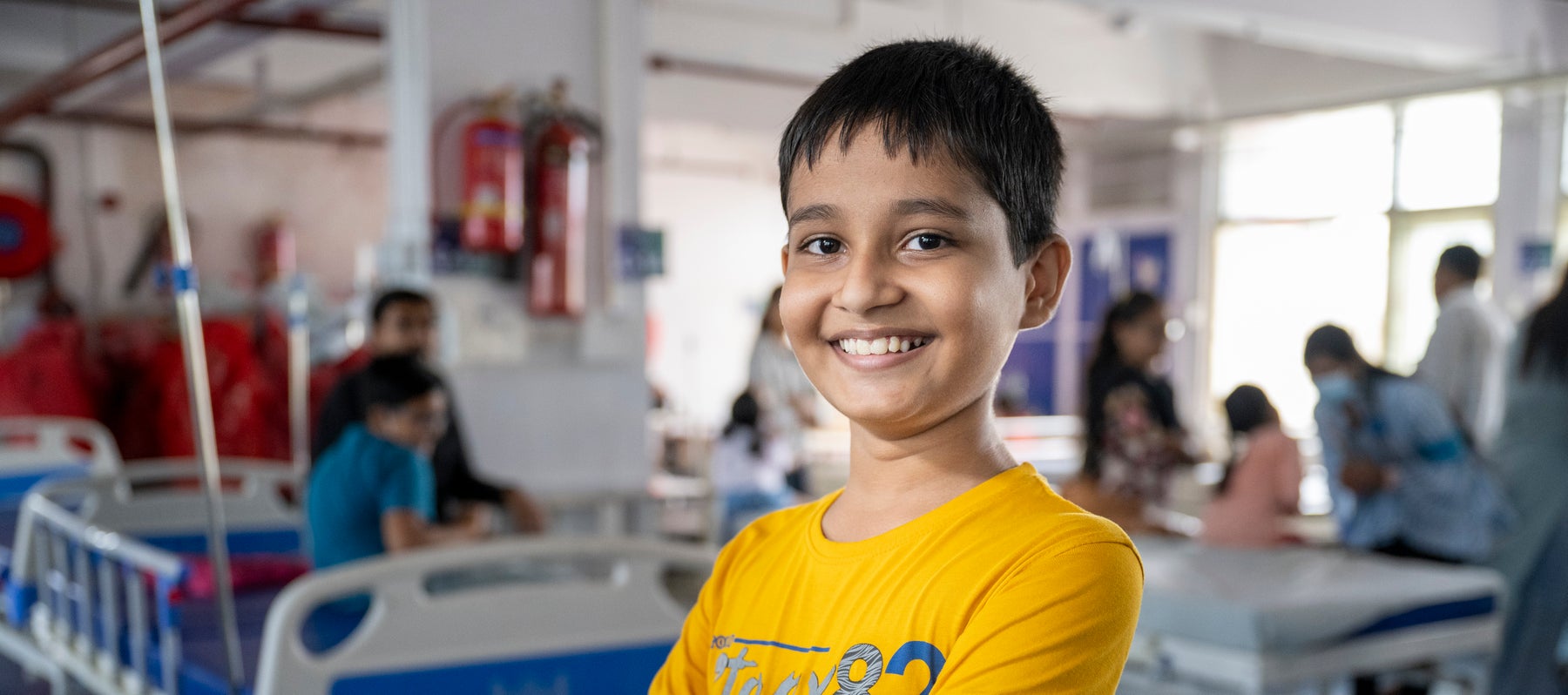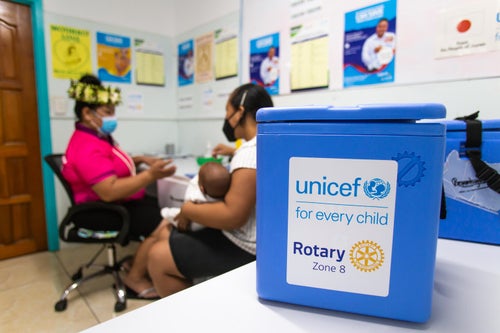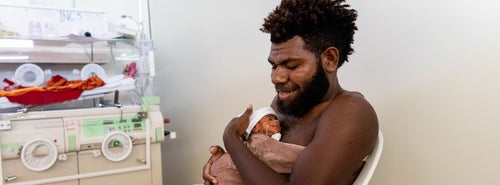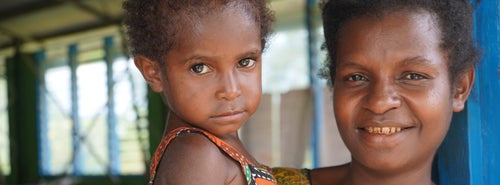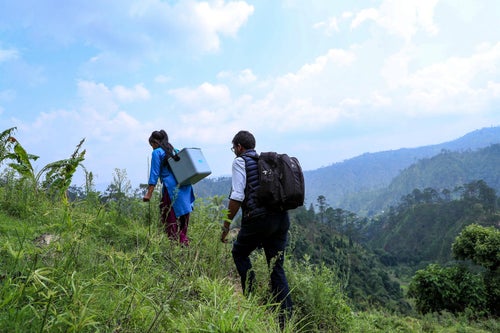“You can see from his photograph at the time of admission the child was very critical,” says Dr. Namrata Makwana, Assistant Professor in Paediatrics, as she shows UNICEF Australia staff images on a mobile phone.
During the second wave of COVID-19 in India last year, hospitals and health centres were overwhelmed with the number of new cases. In response, UNICEF worked closely with the government on the COVID-19 response and vaccination.
While children were mostly spared the worst of COVID-19, some suffered from rare complications weeks after.
In May 2021, Munaf was feeling unwell, so his family rushed him to their local hospital in Jamnagar, Gujarat. He was diagnosed with multisystem inflammatory syndrome in children (MIS-C), which can be deadly.
MIS-C is a condition where different body parts can become inflamed, including the heart, lungs, kidneys, brain, skin, eyes, or gastrointestinal organs. In children, MIS-C can cause stomach pains, diarrhoea, dizziness and vomiting.
It is not known what causes the condition, but many children with MIS-C had COVID-19 or had been around someone with the disease.
Munaf’s father had COVID-19 one and half months before Munaf fell ill.

At the hospital, Munaf was treated immediately with medications and put on a ventilator to help him breathe. He was then put on a high flow nasal cannula, supplied by UNICEF, consuming a minimum of six litres of oxygen per day.
Thanks to the UNICEF-supported oxygen generation plant staff were able to treat Munaf with oxygen, quickly. Today, more than a year later, Munaf visited the hospital for a check-up. He is happy, healthy and glad to return to school.
“[Munaf] recovered after a long duration of almost 14 to 20 days and now he's completely alright,” says Dr. Makwana, who has been working at the hospital for 10 years.
“But we did not have hope that child would survive at that time.”
This oxygen generation plant was one of the first to be installed at the height of the COVID-19 crisis in India. These plants cater to a wide range of needs in a hospital, including operating theatres, intensive care and neonatal units.
There is a constant high demand for oxygen in hospitals and this adds to the huge cost of running any hospital.
An oxygen generation plant produces medical oxygen on site reducing the need to source oxygen cylinders and therefore reducing costs.
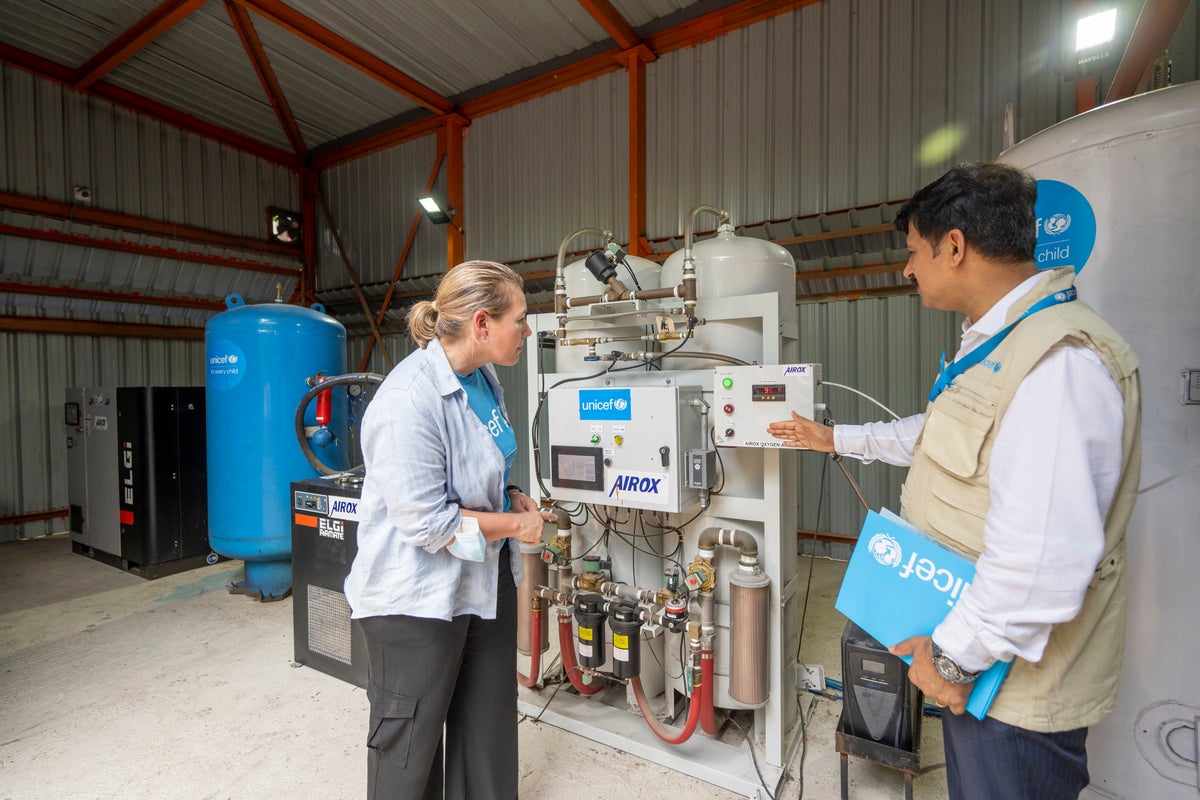
In response to the pandemic, UNICEF India installed oxygen generation plants in government hospitals across India.
Each plant can provide oxygen to a 500-bed hospital for more than two decades. Oxygen therapy was a critical part of UNICEF’s COVID-19 surge response and is considered the most effective treatments.
Dr. Makwana says the first recorded paediatric patient in Gujarat was from Jamnagar. Since the beginning of the pandemic, they have seen 135 COVID-19 positive patients in their paediatric department – all required oxygen.
“I still remember when the first COVID patient came here in Jamnagar,” says Dr. Makwana. “We used to wear full PPE kit with a mask... it was so hot and humid, and we had to work almost 24/7.”
“At that time, we were in dire need of oxygen and other facilities. We got the help from UNICEF in the form of oxygen generation plant and high flow nasal cannula. So, it was a great help at that time.”
UNICEF India also procured life-saving supplies such as oxygen concentrators, RT-PCR testing machines, personal protection equipment and more.
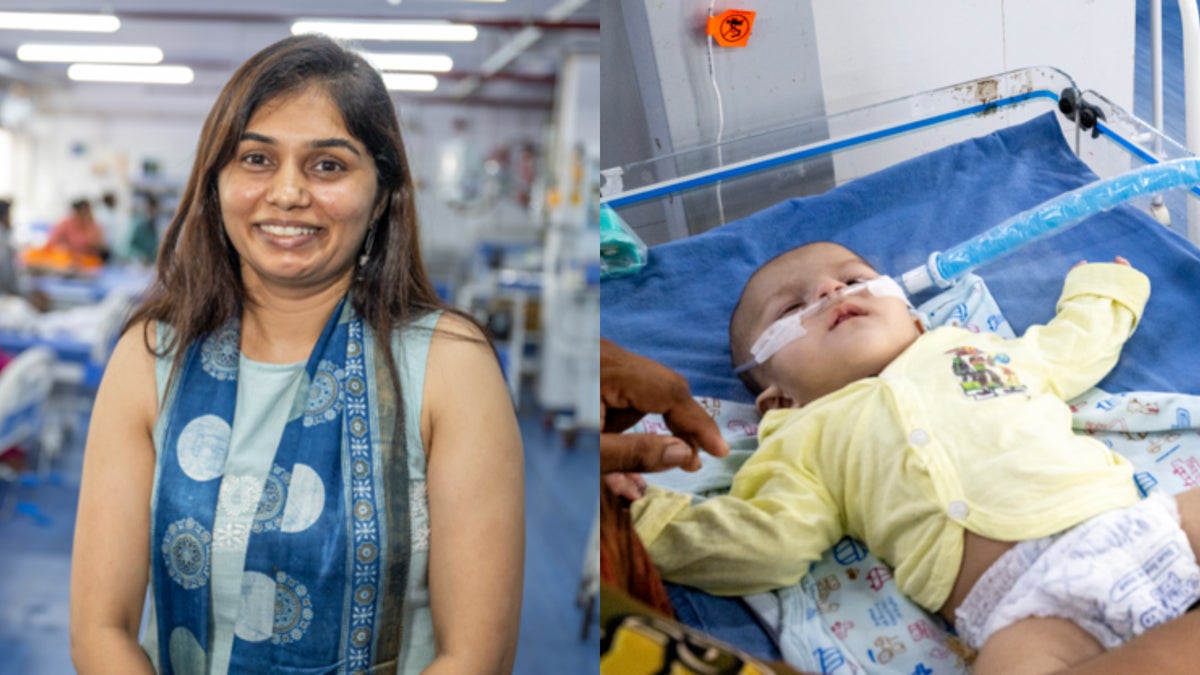
Today, these oxygen generation plants continue to save lives. The oxygen is now helping newborns and children recover from various illnesses, like little Rekha (pictured below) who has a genetic blood disorder and needs to come to the hospital frequently.

How you made a difference in India
A message of thanks from our teams in India
Thanks to the support of our generous donors, together we have created a lasting impact and further strengthened the health system for children and families.
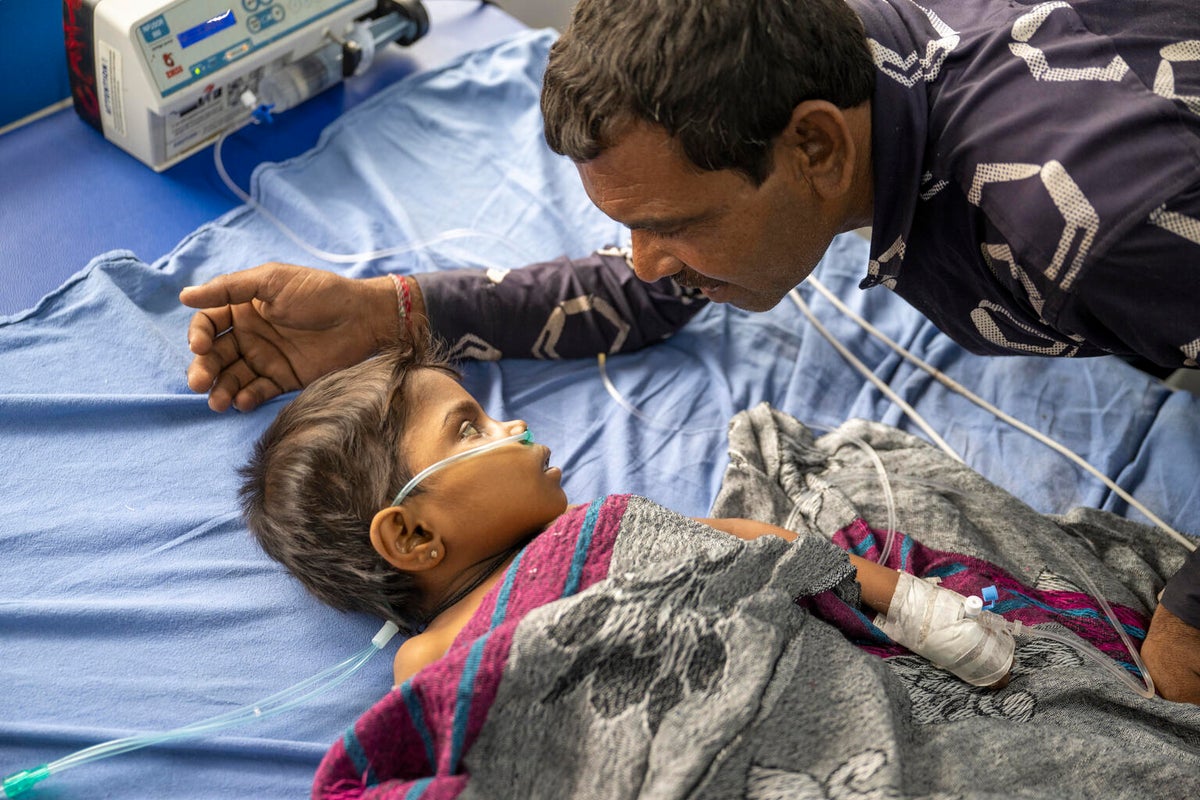
Thanks to the generous support of our donors, UNICEF teams were able to rush life-saving supplies to India during the outbreak last year including:
- Oxygen concentrators
- High flow nasal cannulas
- RTPCR machines for COVID testing
- Cold chain equipment
- Personal Protective Equipment
- Oxygen generation plants
When you donate to UNICEF in an emergency, you not only help rush life-saving supplies, but create a lasting impact for children. Thank you.
Related articles
Stay up-to-date on UNICEF's work in Australia and around the world


